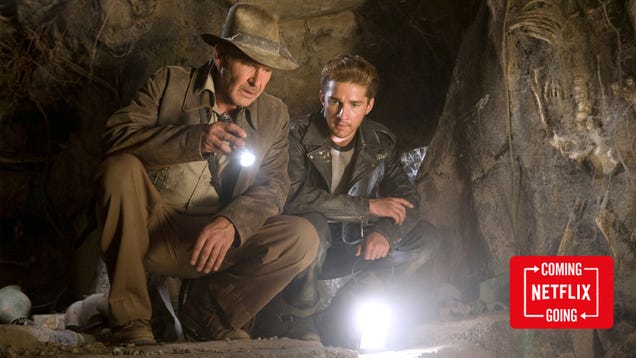
Round out 2018 with deals on Philips Hue lights, Anker charging gear, Amazon-branded trail mix, and a lot more.
Go to Source
Author: Shep McAllister on Kinja Deals, shared by Shep McAllister to Lifehacker

Tulsa Family Lawyer and Mediator

Round out 2018 with deals on Philips Hue lights, Anker charging gear, Amazon-branded trail mix, and a lot more.
Go to Source
Author: Shep McAllister on Kinja Deals, shared by Shep McAllister to Lifehacker

Congratulations to everyone who made it to the end of 2018, I dare say you deserve a drink (or seven). If you’re still scrambling, trying to figure out how to toast this year into oblivion, calm yourself, and gaze upon the many good three-ingredient cocktails we made and enjoyed this year. There are a lot to choose…
Go to Source
Author: Claire Lower on Skillet, shared by Claire Lower to Lifehacker

When you read a lot of personal finance articles, you inevitably reach a point where you can’t buy a water bottle at the corner deli or buy gas without driving around to find something that’s two cents cheaper a gallon without feeling some sense of shame. Those are unnecessary purchases after all, and everyone knows…
Go to Source
Author: Alicia Adamczyk on Two Cents, shared by Alicia Adamczyk to Lifehacker
Deadspin Dan Snyder Doesn’t Get It | The Slot Lawyer Who Filed Complaint Against Brett Kavanaugh Says He Was ‘Like a Crazed Conspiracy Theorist’ | Splinter DoubleTree Fires Employees Who Evicted Guest for ‘Calling His Mom While Black’ | TV Club Outlander brings…
Go to Source
Author: Kinja! on Kinja Roundup, shared by Virginia K. Smith to Lifehacker

Before we head off into the land of hope and awesomeness that is 2019, we have a few hours left to take stock of how far we’ve come in the past year. I’m preparing next year’s fitness challenges and want to hear what you thought of the ones we just did. What did you love? What motivated you to keep going?
Go to Source
Author: Beth Skwarecki on Vitals, shared by Beth Skwarecki to Lifehacker

Cancún is already pretty well-packaged for tourists. So this week’s Hack Your City is a challenge: what lays undiscovered in this young city? What has sprung up outside the crowded strip of beach resorts? And what tricks help locals get by in this tourist-dominated town?
Go to Source
Author: Nick Douglas

The end of year offerings from Netflix were grim, so it is with pleasure that I welcome the bumper crop of entertainment in this week’s harvest. We’ve got the full complement of Indiana Jones flicks arriving on Tuesday (I see we are now calling the first installment “Indiana Jones and the Raiders of the Lost Ark,”…
Go to Source
Author: Melissa Kirsch

Amazon’s bringing the year to a close with a Gold Box sale on several popular Anker products, spanning a variety of categories. The PowerPort Cube power strip was probably the biggest new hit with our readers this year, but who couldn’t use a new Qi pad, a 5-port charging hub, or a USB-C hub for their laptop? For the…
Go to Source
Author: Shep McAllister on Kinja Deals, shared by Shep McAllister to Lifehacker
Four billion miles from Earth, the New Horizons probe that recently sent such lovely pictures of Pluto is drawing near to the most distant object mankind has ever come close to: Ultima Thule, a mysterious rock deep in the Kuiper belt. The historic rendezvous takes place early tomorrow morning.
This is an encounter nearly 30 years in the making, if you count back to the mission’s beginnings in 1989, but it’s also been some 13 years since launch — the timing and nature of which was calculated to give the probe this opportunity after it had completed its primary mission.
New Horizons arrived at Pluto in the summer of 2015, and in its fleeting passage took thousands of photos and readings that scientists are still poring over. It taught us many things about the distant dwarf planet, but by the time it took its extraordinary parting shots of Pluto’s atmosphere, the team was already thinking about its next destination.
Given the craft’s extreme speed and the incredibly distant setting for its first mission, the options for what to investigate were limited — if you can call the billions of objects floating in the Kuiper Belt “limited.”
In fact the next destination had been chosen during a search undertaken in concert with the Hubble Space Telescope team back in 2014. Ground-based reconnaissance wasn’t exact enough, and the New Horizons had to convince Hubble’s operators basically to dedicate to their cause two weeks of the satellite’s time on short notice. After an initial rejection and “some high-stakes backroom maneuvering,” as Principal Investigator Alan Stern describes it in his book about the mission, the team made it happen, and Hubble data identified several potential targets.
2014 MU69 is a rock of unknown (but probably weird) shape about 20 miles across, floating in the belt about a billion miles from Pluto. But soon it would be known by another name.
“Ultima Thule,” Stern told me in an interview onstage at Disrupt SF in September. “This is an ancient building block of planets like Pluto, formed 4 billion years ago; it’s been out there in this deep freeze, almost in absolute zero the whole time. It’s a time capsule.”
At the time, he and the team had just gotten visual confirmation of the target, though nothing more than a twinkle in the distance. He was leaving immediately after our talk to go run flyby simulations with the team.
“I’m super excited,” he told me. “That will be the most distant exploration of any world in the history of not just spaceflight, but in the history of human exploration. I don’t think anybody will top that for a long time.”
The Voyagers are the farthest human-made objects, sure, but they’ve been flying through empty space for decades. New Horizons is out here meeting strange objects in an asteroid belt. Good luck putting together another mission like that in less than a few decades.
In the time I’ve taken to write this post, New Horizons has gone from almost exactly 600,000 kilometers away from Ultima Thule to less than 538,000 (and by this you shall know my velocity) — so it’ll be there quite soon. Just about 10 hours out, making it very early morning Eastern time on New Year’s Day.
Even then, however, that’s just when New Horizons will actually encounter the object — we won’t know until the signal it sends at the speed of light arrives here on Earth 12 hours later. Pluto is far!
The first data back will confirm the telemetry and basic success of the flyby. It will also begin sending images back as soon as possible, and while it’s possible that we’ll have fabulous pictures of the object by the afternoon, it depends a great deal on how things go during the encounter. At the latest we’ll see some by the next day; media briefings are planned for January 2 and 3 for this purpose.
Once those images start flowing in, though, they may be even better in a way than those we got of Pluto. If all goes well, they’ll be capturing photos at a resolution of 35 meters per pixel, more than twice as good as the 70-80 m/px we got of Pluto. Note that these will only come later, after some basic shots confirming the flyby went as planned and allowing the team to better sort through the raw data coming in.
“You should know that that these stretch-goal observations are risky,” wrote Stern in a post on the mission’s page, “requiring us to know exactly where both Ultima and New Horizons are as they pass one another at over 32,000 mph in the darkness of the Kuiper Belt… But with risk comes reward, and we would rather try than not try to get these, and that is what we will do.”
NASA public relations and other staff are still affected by the federal shutdown, but the New Horizons team will be covering the signal acquisition and first data live anyway; follow the mission on Twitter or check in to the NASA Live stream tomorrow morning at 7 AM Pacific time for the whole program. The schedule and lots of links can be found here.
Go to Source
Author: Devin Coldewey
While the thought of a machine that can squirt out endless ropes of molten glass is a bit frightening, the folks at MIT have just about perfected the process. In a paper published in 3D Printing and Additive Manufacturing, researchers Chikara Inamura, Michael Stern, Daniel Lizardo, Peter Houk and Neri Oxman describe a system for 3D printing glass that offers far more control over the hot material and the final product.
Their system, called G3DP2, “is a new AM platform for molten glass that combines digitally integrated three-zone thermal control system with four-axis motion control system, introducing industrial-scale production capabilities with enhanced production rate and reliability while ensuring product accuracy and repeatability, all previously unattainable for glass.”
The system uses a closed, heated box that holds the melted glass and another thermally controlled box where it prints the object. A moveable plate drops the object lower and lower as it is being printed and the print head moves above it. The system is interesting because it actually produces clear glass structures that can be used for decoration or building. The researchers take special care to control the glass extrusion system to ensure that it cools down and crystallizes without injecting impurities or structural problems.
“In the future, combining the advantages of this AM technology with the multitude of unique material properties of glass such as transparency, strength, and chemical stability, we may start to see new archetypes of multifunctional building blocks,” wrote the creators.
Go to Source
Author: John Biggs